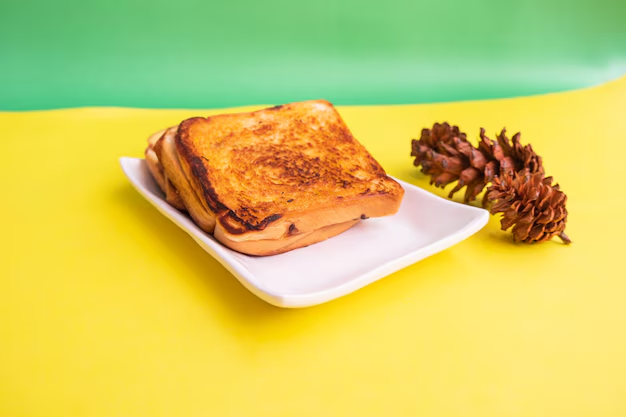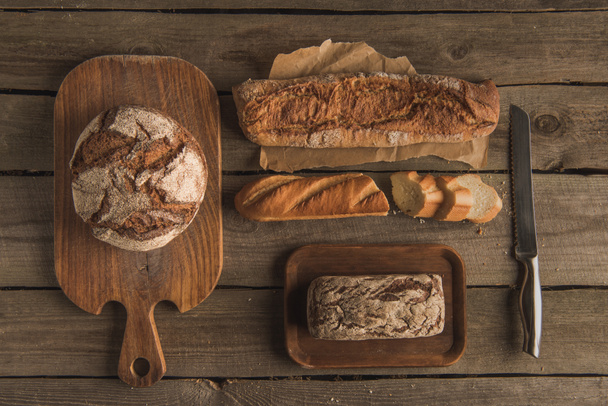The scent of freshly baked bread is truly comforting. For many, the art of bread-making goes beyond the kitchen; it embodies a timeless tradition that offers a sense of satisfaction. Whether you’re just starting or have been baking for years, delving into the intricacies of bread-making can elevate your results. This guide presents five essential tips for creating the perfect loaves, inspired by insights from the article found at https://me-encantas.com/2021/05/18/5-consejos-para-hacer-el-mejor-pan. These pointers will make your bread-making journey both enjoyable and rewarding.
The Significance of Kneading for Ideal Bread Texture
How Effective Kneading Prevents Heavy Bread
Kneading is one of the most vital components in the bread-making process, influencing both the texture and rise of your loaf. Proper kneading encourages gluten development—the protein that creates a network within the dough, enabling it to trap air and achieve a light, airy structure. As highlighted in the Me Encantas article, insufficient kneading will hinder the dough’s flexibility necessary for optimal rising, leading to a dense, compact loaf.
Kneading enhances the dough’s elasticity and manageability, promoting better gluten formation. When kneading by hand, strive to stretch and fold the dough for about ten minutes. If you opt for a stand mixer, using the dough hook can streamline the process while saving time. However, be cautious not to over-knead, as this can render the dough dry and tough. Look for a smooth, elastic texture and test the dough’s ability to stretch without tearing to determine its readiness.
Essential Guidelines for Perfecting Bread Baking
Key Takeaways from the Me Encantas Article
Baking bread at home can be immensely satisfying, and the insights from Me Encantas provide five fundamental tips for crafting the perfect loaf. Regardless of your experience level, these tips can significantly enhance your baking results. By focusing on every detail—from choosing high-quality ingredients to refining your kneading technique—you can greatly impact the success of your bread-making endeavors.
The article emphasizes that the true magic of bread lies in using the best ingredients coupled with the correct techniques. Fresh, premium flour and yeast are essential, as is providing the dough with ample time to proof for an ideal rise. By adhering to these guidelines, you’ll not only relish the process of baking but also create delicious homemade bread.
Choosing High-Quality Ingredients for Exceptional Bread
The Impact of Ingredient Quality on Outstanding Baking
The secret to delicious bread starts with the quality of its ingredients. The texture and flavor of your bread are significantly influenced by the flour you select. Unbleached organic flour is often recommended for its robust flavor and its ability to form gluten, imparting a chewy texture to the bread. This critical point is highlighted in the Me Encantas article, emphasizing its importance in achieving optimal results.
Yeast is another crucial component in bread-making. Utilizing fresh, active yeast is essential for ensuring your bread rises adequately, resulting in a light, fluffy loaf. Always verify the expiration date of your yeast before beginning, as expired yeast can produce a dense or flat loaf. Additionally, the quality of the water used in your dough is essential. Choose filtered or bottled water to avoid any chemicals that could interfere with the dough’s rise, guaranteeing a successful bake.
Perfecting the Proofing Process for Maximum Rise
The Importance of Adequate Proofing Time
Proofing, or allowing the dough to rest and rise, is a critical phase in bread-making that can determine the final loaf’s quality. Allowing the dough sufficient time to rise aids in developing its texture, flavor, and overall structure. The Me Encantas guide emphasizes that patience during the proofing process is crucial. Hurrying this step can result in a loaf lacking the desired airy texture and complexity of flavor.
For optimal results, proof the dough in a warm, draft-free area. The ideal temperature range is between 75°F and 80°F. Cover the dough with a damp cloth to prevent drying. Depending on your recipe, the dough may require several proofing rounds to reach the desired rise and texture.
Storing and Preserving Freshly Baked Bread
Best Methods for Keeping Bread Fresh
After achieving the perfect loaf, proper storage is essential for maintaining freshness and flavor. Bread can become stale and lose its texture if not stored correctly. For short-term storage, keep your bread in a paper or cloth bag to facilitate airflow, preserving the crust’s crispiness. For longer-term storage, consider freezing the bread. Slice it before freezing to easily retrieve only what you need, ensuring the remainder remains fresh.
Avoid using plastic bags or airtight containers for storage, as these can create condensation that makes the crust soggy. By adhering to these storage recommendations, you’ll enjoy fresh, delectable bread for several days post-baking.
Selecting the Best Flour for Perfect Bread
Understanding Flour Types for Ideal Bread Making
Flour serves as the backbone of any bread, and the type you choose significantly influences the texture and rise of your loaf. Bread flour, for instance, has a higher protein content essential for developing the gluten structure required for a chewy texture and robust rise. Conversely, all-purpose flour can yield softer loaves but lacks the structural integrity needed for more complex bread types. Whole wheat flour, known for its nutty flavor and denser crumb, works well for heartier, rustic loaves. Experimenting with various flours will help you discover the perfect fit for the bread you wish to bake.
The Necessity of Fresh Ingredients in Bread Making
Why Freshness is Essential for Great Bread
The freshness of your ingredients plays a pivotal role in your bread’s quality. Fresh yeast ensures a superior rise and enhances flavor depth, while fresh flour contains more nutrients and natural flavors. As mentioned in the Me Encantas article, checking expiration dates and storing ingredients properly is vital. Flour should be kept in a cool, dry place, while yeast should be refrigerated to preserve its potency and effectiveness. By following these guidelines, you’ll achieve more flavorful and successful bakes.

Mastering the Process of Dough Preparation
The Art and Science of Creating Dough
Once you’ve gathered your fresh ingredients, the real magic of bread-making commences: transforming these basic elements into dough. This process—mixing, kneading, and fermenting—is where bread evolves into something extraordinary. Understanding the balance between the art and science of dough preparation is vital for achieving exceptional outcomes. Paying careful attention to these steps will ensure the dough achieves the right texture and structure for baking.
Achieving the Ideal Knead for Optimal Bread Texture
Techniques for Kneading Dough to Perfection
Kneading is a crucial step in developing the gluten network that gives bread its distinct texture and rise. However, it’s vital to find the right balance—over-kneading can lead to a tough loaf, while under-kneading may result in dense, heavy bread. The advice from Me Encantas suggests kneading until the dough becomes smooth and elastic, typically requiring about ten minutes of hand kneading or five minutes with a stand mixer. You can also use the “windowpane test” to assess if the dough is ready: stretch a small piece of dough into a thin, translucent sheet without tearing.
Exploring Flavor and Style Variations in Homemade Bread
Enhancing Bread with Unique Flavors and Ingredients
Baking bread offers limitless opportunities for creativity, allowing you to experiment with various flavors and styles at home. The Me Encantas article encourages bakers to be inventive by incorporating dried fruits, seeds, herbs, or spices into their dough, customizing each loaf to suit personal preferences and dietary requirements.
For example, adding herbs like basil, rosemary, or thyme can lend a savory loaf a delightful taste that pairs perfectly with salads or soups. If you prefer sweet bread, consider mixing in dried fruits like raisins or cranberries for a delectable breakfast option. Additionally, trying out different types of bread, such as rye, whole wheat, or sourdough, introduces unique flavors and textures, allowing every loaf to become a personalized creation.
Addressing Common Bread-Making Challenges
Troubleshooting Frequent Issues Encountered by Bakers
Even the most experienced bakers can face obstacles when making bread. From dough that refuses to rise to loaves that turn out dense, it’s essential to understand how to troubleshoot these common challenges to enhance your baking skills.
Managing Sticky or Dry Dough
Sticky or dry dough can be frequent hurdles in bread making, but they can be easily resolved with the right adjustments. If your dough feels excessively sticky, it may be due to high hydration levels or overproofing. Incorporating a small amount of flour during kneading can help mitigate stickiness. Conversely, if your dough is too dry, it may not rise effectively or achieve the correct texture. To fix this, gradually add water until the dough reaches the perfect consistency. As highlighted in the Me Encantas insights, achieving the right balance in hydration is crucial for crafting perfect dough.
Correcting a Dense Loaf
A dense loaf can stem from various factors, such as insufficient kneading, inadequate rise time, or inactive yeast. To prevent this, ensure your yeast is fresh and allow ample time for the dough to rise. Adequate kneading is essential for developing the gluten structure that traps air, contributing to the bread’s light texture. The Me Encantas guide recommends letting your dough rise until it has doubled in size before shaping and baking for optimal outcomes.
The Role of Temperature Control in Bread Making
Mastering Temperature for Improved Dough and Bread Quality
Temperature significantly influences every phase of bread making, from proofing the dough to baking the final loaf. Maintaining the proper temperatures for both your dough and oven is vital for consistently producing high-quality bread. According to the Me Encantas article, dough rises most effectively in a warm, draft-free environment. If your kitchen is cool, consider creating a makeshift proofing box by placing the dough in an oven with the light on or in a warm spot near a heat source.
When it comes to baking, ensure your oven is preheated to the right temperature before placing the loaf inside. If the oven is too hot, the crust may burn before the inside cooks properly; if too cool, the loaf may take longer to bake, resulting in an undesired texture. Monitoring temperatures throughout the baking process is critical for achieving the perfect loaf.
Conclusion: Your Path to Bread Baking Success
Baking bread at home is an enriching experience that allows for creativity and skill development. By following these essential tips from Me Encantas, you’ll build a solid foundation for mastering your bread-making skills. Remember, patience and practice are key ingredients to success. With each loaf you bake, you’ll refine your technique and deepen your appreciation for this timeless craft.



